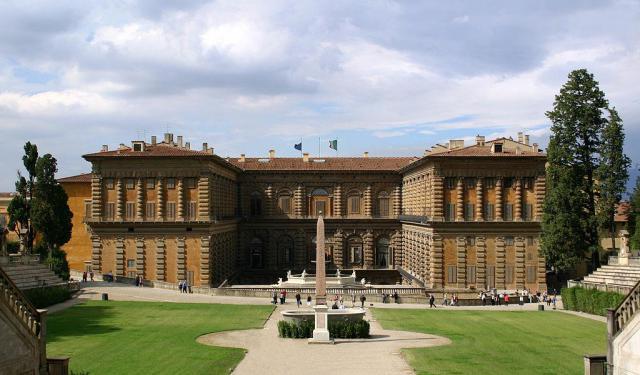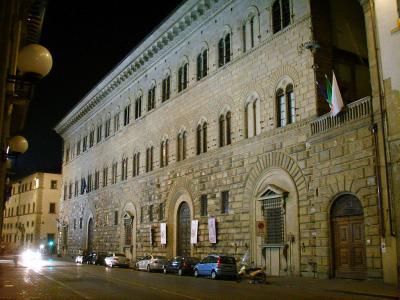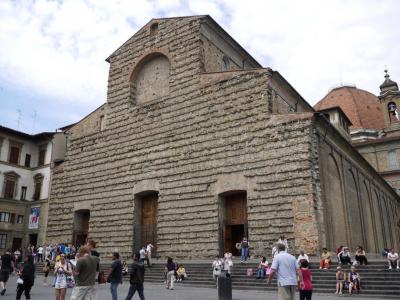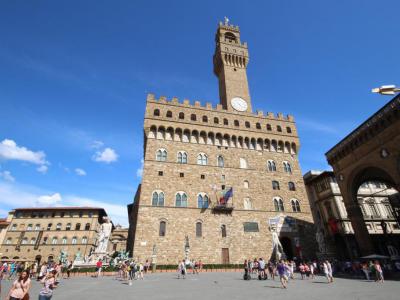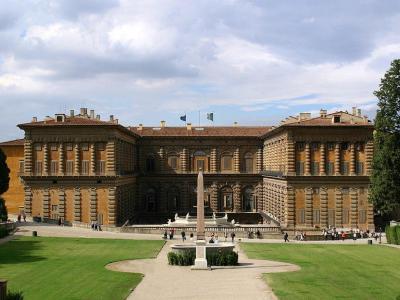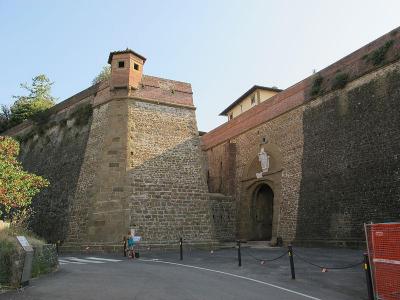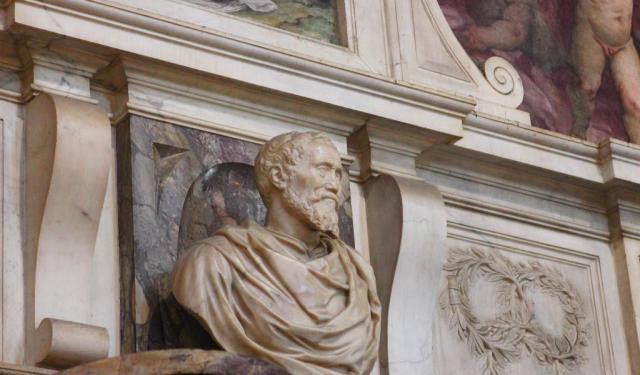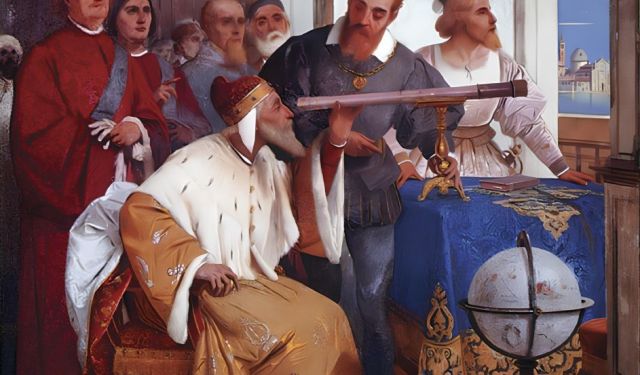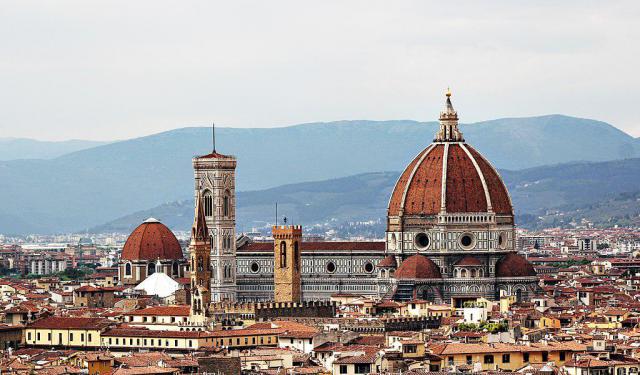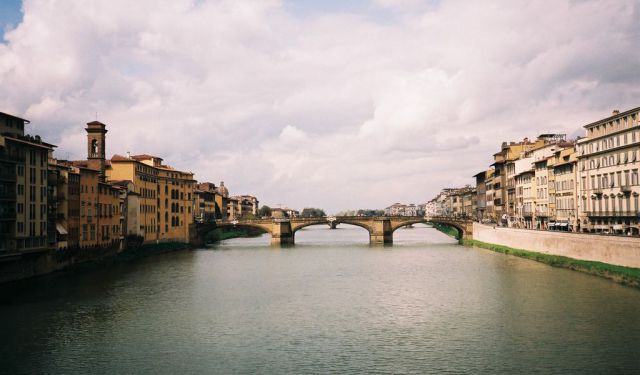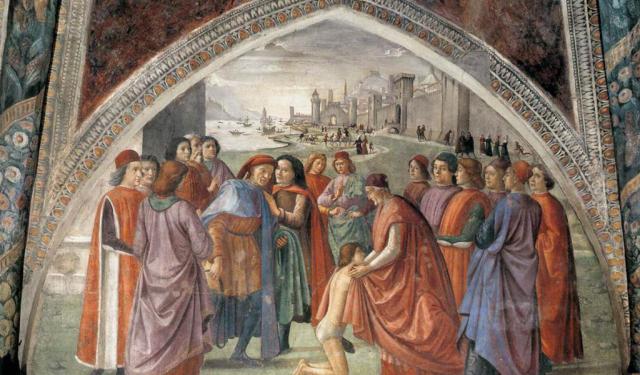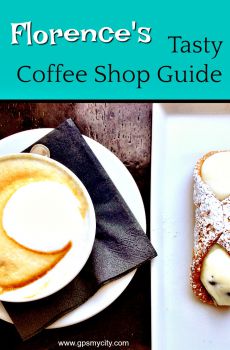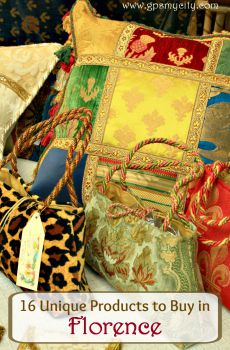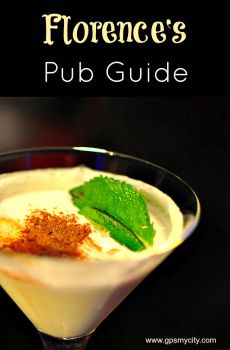Medici Landmarks Walking Tour (Self Guided), Florence
The Medici family helped to establish Florence as the single most important art capital of Renaissance Europe. In order to prove wealth and power, they built numerous palaces, libraries, churches, chapels and personal residences. The Medicis were big lovers of art and they acquired huge, expensive collections, as well as supporting many sculptors and painters of the time.
Designed by Michelozzo to accommodate the family’s banking business, Palazzo Medici Riccardi gives a great insight into the Medici way of life. Already in the 15th century, it included a private garden, protected from the town streets by a medieval wall. The historic building houses one of the most beautiful frescoes in the history of art – Cappella dei Magi, by Benozzo Gozzoli, located in a private family chapel which justifies travelling to Florence all by itself!
When the court of Medici was transferred to Palazzo Vecchio (from Palazzo Medici-Riccardi), it was transformed into a fascinating labyrinth of institutional chambers, apartments, terraces and courtyards. All of the rooms are magnificently decorated by artists such as Michelangelo, Giorgio Vasari and Donatello.
Continue with a visit to the Palazzo Pitti, which became home to the Medicis’ art collection, and Forte di Belvedere, later built to protect it. Both of these were, in fact, connected to the Palazzo Vecchio via a secret corridor visible on the Arno bridge (Ponte Vecchio).
Still more history can be witnessed at the Basilica San Lorenzo – the first Florentine church built in a new, Renaissance style; a model for later construction. Later upgrades, such as the New Sacristy and Medici-Laurenziana Library, were designed by the ever-ingenious Michelangelo. Here you will find the resting place of Giovanni de' Bicci di Medici – founder of the Medici bank and, hence, the family's subsequent fortunes – who is buried along with his grandsons in a tomb by Verrocchio.
Most, if not all, the history of Renaissance Florence can be understood by visiting these Medici landmarks/residences and their amazing collections/decorations – so follow our self-guided walk to see the opulent lives of the Medici family that helped usher the world into a new era.
Designed by Michelozzo to accommodate the family’s banking business, Palazzo Medici Riccardi gives a great insight into the Medici way of life. Already in the 15th century, it included a private garden, protected from the town streets by a medieval wall. The historic building houses one of the most beautiful frescoes in the history of art – Cappella dei Magi, by Benozzo Gozzoli, located in a private family chapel which justifies travelling to Florence all by itself!
When the court of Medici was transferred to Palazzo Vecchio (from Palazzo Medici-Riccardi), it was transformed into a fascinating labyrinth of institutional chambers, apartments, terraces and courtyards. All of the rooms are magnificently decorated by artists such as Michelangelo, Giorgio Vasari and Donatello.
Continue with a visit to the Palazzo Pitti, which became home to the Medicis’ art collection, and Forte di Belvedere, later built to protect it. Both of these were, in fact, connected to the Palazzo Vecchio via a secret corridor visible on the Arno bridge (Ponte Vecchio).
Still more history can be witnessed at the Basilica San Lorenzo – the first Florentine church built in a new, Renaissance style; a model for later construction. Later upgrades, such as the New Sacristy and Medici-Laurenziana Library, were designed by the ever-ingenious Michelangelo. Here you will find the resting place of Giovanni de' Bicci di Medici – founder of the Medici bank and, hence, the family's subsequent fortunes – who is buried along with his grandsons in a tomb by Verrocchio.
Most, if not all, the history of Renaissance Florence can be understood by visiting these Medici landmarks/residences and their amazing collections/decorations – so follow our self-guided walk to see the opulent lives of the Medici family that helped usher the world into a new era.
How it works: Download the app "GPSmyCity: Walks in 1K+ Cities" from Apple App Store or Google Play Store to your mobile phone or tablet. The app turns your mobile device into a personal tour guide and its built-in GPS navigation functions guide you from one tour stop to next. The app works offline, so no data plan is needed when traveling abroad.
Medici Landmarks Walking Tour Map
Guide Name: Medici Landmarks Walking Tour
Guide Location: Italy » Florence (See other walking tours in Florence)
Guide Type: Self-guided Walking Tour (Sightseeing)
# of Attractions: 5
Tour Duration: 1 Hour(s)
Travel Distance: 2.7 Km or 1.7 Miles
Author: greghasleft
Sight(s) Featured in This Guide:
Guide Location: Italy » Florence (See other walking tours in Florence)
Guide Type: Self-guided Walking Tour (Sightseeing)
# of Attractions: 5
Tour Duration: 1 Hour(s)
Travel Distance: 2.7 Km or 1.7 Miles
Author: greghasleft
Sight(s) Featured in This Guide:
- Palazzo Medici Riccardi (Medici Riccardi Palace)
- Basilica di San Lorenzo (Basilica of St. Lawrence)
- Palazzo Vecchio (Old Palace)
- Palazzo Pitti (Pitti Palace)
- Forte di Belvedere (Fort Belvedere)
1) Palazzo Medici Riccardi (Medici Riccardi Palace)
The first Medici palace, once the residence of Cosimo the Elder and Lorenzo the Magnificent, stood as a thriving hub for numerous prominent Renaissance artists, among them the prodigious Michelangelo, who was discovered by Lorenzo while still in his formative teenage years.
This grand edifice, an imposing spectacle of its time, set a new standard with its three tiers of progressively textured stonework and sizable, evenly spaced two-light windows. A magnificent cornice crowns the entirety of its exterior, exemplifying its resolute presence. The building encompasses an elegant square courtyard at its core, a stark contrast to the commanding impression projected by its façade. Together, they symbolize the duality of the Medici family, projecting an image of wealth, influence, and even ruthlessness to the outside world, while fostering an atmosphere of refinement as patrons of the humanist Renaissance within their sanctuary.
While the courtyard and gardens offer a delightful and complimentary experience, it is certainly worthwhile to invest in the admission fee and ascend to the upper rooms. These spaces exhibit designs, decor, style, furnishings, and collections that bear testament to the profound power, far-reaching influence, and immense wealth of the Medici dynasty.
A hidden gem within the palace, the Magi Chapel, mesmerizes with its diminutive size yet resplendent floor-to-ceiling frescoes by the gifted artist Benozzo Gozzoli. The intricate details within the artwork, such as the elaborate costumes, depictions of animals, and picturesque scenery, captivate the observer's gaze. One can spend an hour studying the reputed likenesses of various members of the illustrious Medici clan, along with notable figures like the Wolf of Rimini: Sigismondo Malatesta. The vibrant colors – considering the work was started in 1459 – create a visual feast where the composition unfolds in a bit of a whirlwind.
Near the end of the tour is the astonishing Galleria, a completely "over-the-top" Baroque marvel, resplendent with walls covered in shimmering gold and a grand domed ceiling adorned with scenes from Greek mythology. Additionally, there is an underground sculpture museum, housed within the former stables. Fortunately, there are minimal queues for entry, allowing visitors to relish the magnificence of the rooms comfortably and at their leisure.
Tip:
To gain entry into the building, it is advisable to queue up in the courtyard, at the base of the staircase.
This grand edifice, an imposing spectacle of its time, set a new standard with its three tiers of progressively textured stonework and sizable, evenly spaced two-light windows. A magnificent cornice crowns the entirety of its exterior, exemplifying its resolute presence. The building encompasses an elegant square courtyard at its core, a stark contrast to the commanding impression projected by its façade. Together, they symbolize the duality of the Medici family, projecting an image of wealth, influence, and even ruthlessness to the outside world, while fostering an atmosphere of refinement as patrons of the humanist Renaissance within their sanctuary.
While the courtyard and gardens offer a delightful and complimentary experience, it is certainly worthwhile to invest in the admission fee and ascend to the upper rooms. These spaces exhibit designs, decor, style, furnishings, and collections that bear testament to the profound power, far-reaching influence, and immense wealth of the Medici dynasty.
A hidden gem within the palace, the Magi Chapel, mesmerizes with its diminutive size yet resplendent floor-to-ceiling frescoes by the gifted artist Benozzo Gozzoli. The intricate details within the artwork, such as the elaborate costumes, depictions of animals, and picturesque scenery, captivate the observer's gaze. One can spend an hour studying the reputed likenesses of various members of the illustrious Medici clan, along with notable figures like the Wolf of Rimini: Sigismondo Malatesta. The vibrant colors – considering the work was started in 1459 – create a visual feast where the composition unfolds in a bit of a whirlwind.
Near the end of the tour is the astonishing Galleria, a completely "over-the-top" Baroque marvel, resplendent with walls covered in shimmering gold and a grand domed ceiling adorned with scenes from Greek mythology. Additionally, there is an underground sculpture museum, housed within the former stables. Fortunately, there are minimal queues for entry, allowing visitors to relish the magnificence of the rooms comfortably and at their leisure.
Tip:
To gain entry into the building, it is advisable to queue up in the courtyard, at the base of the staircase.
2) Basilica di San Lorenzo (Basilica of St. Lawrence) (must see)
Amidst the lively atmosphere of Florence’s Central Market stands one of the city's oldest and most historically significant churches-San Lorenzo. Thought to have been founded in the late Roman era, it’s also the city’s largest basilica. While the rough, unfinished exterior may not draw immediate attention, the interior reveals the grandeur befitting the primary place of worship and final resting site for the powerful Medici dynasty.
The Medicis commissioned none other than the brilliant Brunelleschi to redesign the church in line with the modern Renaissance style. Meanwhile, Michelangelo was tasked with creating an elaborate marble façade. Unfortunately, the death of both Brunelleschi and Giovanni de’ Medici halted progress, leaving Michelangelo to bear the frustration of an unfulfilled vision. Still, he managed to design the internal façade, visible when you turn to look toward the main entrance from the nave.
Step through the church’s doors and you’ll be surrounded by the elegance of Renaissance design: clean lines, grey-and-white columns, and marble detailing that leads to the altar, which marks the tomb of Florence’s first Medici ruler. Donatello’s final works, a pair of bronze pulpits, can be spotted along the central nave, and both he and Cosimo de’ Medici are interred in the crypt. Nearby, Michelangelo’s New Sacristy holds sculpted tombs with allegorical figures of Night and Day, Dusk and Dawn.
The adjacent Chapel of the Princes also impresses with its monumental dome and exquisite fresco arrangements-a grand expression of Medici power. Add in the cloisters, peaceful gardens, and the Laurentian Library-also attributed to Michelangelo-and you’ve got a rare haven of art, architecture, and calm in the heart of Florence.
Tip: Keep in mind that each area has its own entrance, and separate admission is required-unless you have the Florence Card. Note that both the Chapel of the Princes and the New Sacristy close in the early afternoon, so plan accordingly. When you're done exploring, grab a table near the Central Market for a relaxed drink or bite and soak up the atmosphere of the square.
The Medicis commissioned none other than the brilliant Brunelleschi to redesign the church in line with the modern Renaissance style. Meanwhile, Michelangelo was tasked with creating an elaborate marble façade. Unfortunately, the death of both Brunelleschi and Giovanni de’ Medici halted progress, leaving Michelangelo to bear the frustration of an unfulfilled vision. Still, he managed to design the internal façade, visible when you turn to look toward the main entrance from the nave.
Step through the church’s doors and you’ll be surrounded by the elegance of Renaissance design: clean lines, grey-and-white columns, and marble detailing that leads to the altar, which marks the tomb of Florence’s first Medici ruler. Donatello’s final works, a pair of bronze pulpits, can be spotted along the central nave, and both he and Cosimo de’ Medici are interred in the crypt. Nearby, Michelangelo’s New Sacristy holds sculpted tombs with allegorical figures of Night and Day, Dusk and Dawn.
The adjacent Chapel of the Princes also impresses with its monumental dome and exquisite fresco arrangements-a grand expression of Medici power. Add in the cloisters, peaceful gardens, and the Laurentian Library-also attributed to Michelangelo-and you’ve got a rare haven of art, architecture, and calm in the heart of Florence.
Tip: Keep in mind that each area has its own entrance, and separate admission is required-unless you have the Florence Card. Note that both the Chapel of the Princes and the New Sacristy close in the early afternoon, so plan accordingly. When you're done exploring, grab a table near the Central Market for a relaxed drink or bite and soak up the atmosphere of the square.
3) Palazzo Vecchio (Old Palace) (must see)
Just like the Cathedral complex and Florence’s world-class galleries, the Old Palace is essential for anyone wanting to grasp the city's history and cultural identity. This massive Romanesque fortress is one of the most striking town halls in all of Tuscany. Since 1872, it has served as the office of Florence’s mayor, but its legacy stretches much further back. Built in 1299, the edifice was the political heart of the Florentine Republic for centuries. When Cosimo de’ Medici moved in with his family in 1540 as Grand Duke, he had it expanded and transformed, blending its medieval bones with elegant Renaissance flair.
The rugged stone façade, lined with shields chronicling Florence’s political past, is also home to an impressive lineup of statues. These include Florence’s heraldic symbol- the Marzocco lion, along with Donatello’s powerful “Judith and Holofernes”, and “Hercules and Cacus”. The nearby Tower of Arnolfo, rising above the palace, offers a climbable vantage point-though access requires a separate ticket.
Meanwhile, inside, every room tells a chapter of the city’s history. You’ll walk through the spectacular Hall of the Five Hundred, designed to glorify Medici rule, and into the more private quarters where the family lived. Decorated under the artistic direction of Giorgio Vasari, these spaces are rich in symbolism and political narrative. Give yourself time to move slowly through the rooms-it’s an immersive dive into Florentine grandeur. And be warned: you may leave with a crick in your neck from gazing.
One standout work here is Michelangelo’s “Genius of Victory”. Originally meant for the tomb of Pope Julius II, the sculpture depicts a young, triumphant figure standing over a defeated older man. The contrast between the two is striking-the victor is smooth and polished, the vanquished figure unfinished and rough, still bearing the weight of the stone.
You’ll also come across something rather haunting-a death mask of Dante Alighieri, displayed between the Apartments of Eleanor and the Halls of the Priors. Though the poet was buried in Ravenna, this plaster cast has become a powerful reminder of his influence on Florence, both politically and culturally. Fans of Dan Brown’s “Inferno” will surely recognize it from the novel.
Tip: If you’re planning a guided visit, it’s best to book directly with the museum by email-include your preferred date and time, and wait for confirmation. Payment is made on the day of your tour, and afterward, you’re free to continue exploring on your own. Just keep in mind: because this is still a working municipal building, access may occasionally be restricted. It’s a good idea to check the official website before you go.
The rugged stone façade, lined with shields chronicling Florence’s political past, is also home to an impressive lineup of statues. These include Florence’s heraldic symbol- the Marzocco lion, along with Donatello’s powerful “Judith and Holofernes”, and “Hercules and Cacus”. The nearby Tower of Arnolfo, rising above the palace, offers a climbable vantage point-though access requires a separate ticket.
Meanwhile, inside, every room tells a chapter of the city’s history. You’ll walk through the spectacular Hall of the Five Hundred, designed to glorify Medici rule, and into the more private quarters where the family lived. Decorated under the artistic direction of Giorgio Vasari, these spaces are rich in symbolism and political narrative. Give yourself time to move slowly through the rooms-it’s an immersive dive into Florentine grandeur. And be warned: you may leave with a crick in your neck from gazing.
One standout work here is Michelangelo’s “Genius of Victory”. Originally meant for the tomb of Pope Julius II, the sculpture depicts a young, triumphant figure standing over a defeated older man. The contrast between the two is striking-the victor is smooth and polished, the vanquished figure unfinished and rough, still bearing the weight of the stone.
You’ll also come across something rather haunting-a death mask of Dante Alighieri, displayed between the Apartments of Eleanor and the Halls of the Priors. Though the poet was buried in Ravenna, this plaster cast has become a powerful reminder of his influence on Florence, both politically and culturally. Fans of Dan Brown’s “Inferno” will surely recognize it from the novel.
Tip: If you’re planning a guided visit, it’s best to book directly with the museum by email-include your preferred date and time, and wait for confirmation. Payment is made on the day of your tour, and afterward, you’re free to continue exploring on your own. Just keep in mind: because this is still a working municipal building, access may occasionally be restricted. It’s a good idea to check the official website before you go.
4) Palazzo Pitti (Pitti Palace) (must see)
The Pitti Palace is one of Florence’s grandest landmarks-missing it would be like skipping a chapter in the city’s history. This massive 15th-century residence is a celebration of Renaissance architecture, and its vast gardens, full of winding paths and hidden corners, offer a new surprise with every turn.
Originally built for the powerful Medici family, the palace served as their official residence from the 16th to the 18th century. After the Medici dynasty ended, the property passed to the House of Lorraine, and later, Napoleon Bonaparte used it as a stronghold during his rule over Italy. Today, the palace houses a remarkable collection of museums- yet, it still holds what may be the richest concentration of Medici art and history. Alongside priceless paintings are beautifully preserved furnishings and interior details that once belonged to the family.
Every part of the palace reflects elegance and power-from the Palatine Gallery, with over 500 Renaissance paintings, to the opulent Royal Apartments, the glittering Medici Treasury, and the Gallery of Costume and Fashion. You’ll also find specialized museums showcasing porcelain and royal carriages, offering a different glimpse into court life.
In short, although it’s been state property since 1919, the palace still carries the atmosphere of a private royal home. And with over 5 million visitors each year, it remains one of Florence’s most admired cultural spots.
Tip: A combo ticket gives you access to both the museums and the gardens for two full days-plenty of time to explore at a relaxed pace. If you plan to spend a few hours in the gardens, don’t forget a hat and water, especially in warmer months. To avoid waiting in long lines at the entrance, booking a guided tour is a smart move. Yes, there's an added cost, but you'll skip the queue and get deeper insights into this piece of Florentine history.
Originally built for the powerful Medici family, the palace served as their official residence from the 16th to the 18th century. After the Medici dynasty ended, the property passed to the House of Lorraine, and later, Napoleon Bonaparte used it as a stronghold during his rule over Italy. Today, the palace houses a remarkable collection of museums- yet, it still holds what may be the richest concentration of Medici art and history. Alongside priceless paintings are beautifully preserved furnishings and interior details that once belonged to the family.
Every part of the palace reflects elegance and power-from the Palatine Gallery, with over 500 Renaissance paintings, to the opulent Royal Apartments, the glittering Medici Treasury, and the Gallery of Costume and Fashion. You’ll also find specialized museums showcasing porcelain and royal carriages, offering a different glimpse into court life.
In short, although it’s been state property since 1919, the palace still carries the atmosphere of a private royal home. And with over 5 million visitors each year, it remains one of Florence’s most admired cultural spots.
Tip: A combo ticket gives you access to both the museums and the gardens for two full days-plenty of time to explore at a relaxed pace. If you plan to spend a few hours in the gardens, don’t forget a hat and water, especially in warmer months. To avoid waiting in long lines at the entrance, booking a guided tour is a smart move. Yes, there's an added cost, but you'll skip the queue and get deeper insights into this piece of Florentine history.
5) Forte di Belvedere (Fort Belvedere)
Fort Belvedere is a striking example of both Italian Renaissance elegance and strategic military design. Built at the end of the 16th century by Grand Duke Ferdinando de’ Medici, the fortress had a dual mission: to protect Florence and to demonstrate the might and wealth of the Medici family. It also served as a secure vault for their treasury and provided a refuge for the Grand Duke during times of unrest or siege.
To allow safe and quick movement, the fort was smartly connected to key spots in the city-like the Old Palace, the Pitti Palace, and the Boboli Gardens-through a network of hidden passageways. Positioned high above Florence, this landmark offered an ideal lookout over the surrounding area. During the Renaissance, fortifications were critical to military strategy. Belvedere’s angled walls were designed for both surveillance and defense, allowing for overlapping lines of fire to protect each section. Interestingly, the great Galileo Galilei once used the site for his astronomical studies. After being sentenced to life imprisonment in 1633, he lived nearby at Villa Arcetri, just beyond the walls.
At the heart of the fort lies a luxurious villa, completed around 1570-before the fortress itself. Meant to shelter the Grand Duke during crises or epidemics, this residence was built for comfort rather than defense. Legend has it the Medici treasures were hidden at the bottom of a heavily guarded well, rigged with traps that would spring on any intruder foolish enough to tamper with the locks.
Following a restoration, Fort Belvedere reopened in 2013, now serving mainly as a cultural venue and exhibition space. The small entrance fee grants access to sweeping views of Florence and the surrounding Tuscan hills-truly one of the city's best panoramic spots.
Tip: Head up to the upper floor for a cozy café-perfect for a relaxed lunch or a cool drink with a view.
To allow safe and quick movement, the fort was smartly connected to key spots in the city-like the Old Palace, the Pitti Palace, and the Boboli Gardens-through a network of hidden passageways. Positioned high above Florence, this landmark offered an ideal lookout over the surrounding area. During the Renaissance, fortifications were critical to military strategy. Belvedere’s angled walls were designed for both surveillance and defense, allowing for overlapping lines of fire to protect each section. Interestingly, the great Galileo Galilei once used the site for his astronomical studies. After being sentenced to life imprisonment in 1633, he lived nearby at Villa Arcetri, just beyond the walls.
At the heart of the fort lies a luxurious villa, completed around 1570-before the fortress itself. Meant to shelter the Grand Duke during crises or epidemics, this residence was built for comfort rather than defense. Legend has it the Medici treasures were hidden at the bottom of a heavily guarded well, rigged with traps that would spring on any intruder foolish enough to tamper with the locks.
Following a restoration, Fort Belvedere reopened in 2013, now serving mainly as a cultural venue and exhibition space. The small entrance fee grants access to sweeping views of Florence and the surrounding Tuscan hills-truly one of the city's best panoramic spots.
Tip: Head up to the upper floor for a cozy café-perfect for a relaxed lunch or a cool drink with a view.
Walking Tours in Florence, Italy
Create Your Own Walk in Florence
Creating your own self-guided walk in Florence is easy and fun. Choose the city attractions that you want to see and a walk route map will be created just for you. You can even set your hotel as the start point of the walk.
Michelangelo's Masterpieces Walking Tour
Though born in the small Tuscan town of Caprese, Michelangelo spent over two decades of his life in Florence-the heart of the Renaissance. It was here that he grew up, was educated, and began shaping his artistic voice, eventually creating some of the most iconic masterpieces the city has ever known.
His larger-than-life work-“David”-didn’t just reshape the image of biblical heroism-it... view more
Tour Duration: 2 Hour(s)
Travel Distance: 4.0 Km or 2.5 Miles
His larger-than-life work-“David”-didn’t just reshape the image of biblical heroism-it... view more
Tour Duration: 2 Hour(s)
Travel Distance: 4.0 Km or 2.5 Miles
Dante's Florence Walking Tour
Dante Alighieri was arguably the greatest – albeit also most controversial – of Italy's poets. After having served as one of the six priors governing Florence, his political activities – including the banishing of several rivals – led to his own banishment, upon which he wrote his masterpiece, “The Divine Comedy”, as a wanderer, seeking protection for his family in one town after... view more
Tour Duration: 1 Hour(s)
Travel Distance: 2.1 Km or 1.3 Miles
Tour Duration: 1 Hour(s)
Travel Distance: 2.1 Km or 1.3 Miles
In Galileo's Footsteps
Galileo Galilei-born in Pisa in 1564-spent much of his life in and around Florence, where some of the most defining moments of his revolutionary career unfolded. A genius of many talents-physicist, mathematician, astronomer, inventor-he helped usher in the scientific revolution and reshape humanity’s understanding of the universe. Florence, the cradle of the Renaissance, became a backdrop for... view more
Tour Duration: 3 Hour(s)
Travel Distance: 8.0 Km or 5 Miles
Tour Duration: 3 Hour(s)
Travel Distance: 8.0 Km or 5 Miles
Florence Introduction Walking Tour
Florence was founded in 59 BC by Julius Caesar as a settlement for his veteran soldiers. Laid out like a Roman military camp, its main roads intersected at what is now the Republic Square. Originally named Fluentia, referencing its location between two rivers, the city later adopted the name Florentia, meaning “flowering” or “flourishing”.
And flourish it did. During the Middle Ages and... view more
Tour Duration: 2 Hour(s)
Travel Distance: 4.1 Km or 2.5 Miles
And flourish it did. During the Middle Ages and... view more
Tour Duration: 2 Hour(s)
Travel Distance: 4.1 Km or 2.5 Miles
Arno South Bank Walking Tour
The area south of the Arno River-known as Oltrarno, or “Beyond the Arno”-offers a quieter, more intimate side of Florence, but one that’s no less captivating. It’s here that you’ll find the grand Pitti Palace, home to a painting collection rivaled only by the Uffizi Gallery, and the expansive Boboli Gardens, once the private domain of the Medici and later, the royal family. As one of the... view more
Tour Duration: 2 Hour(s)
Travel Distance: 2.4 Km or 1.5 Miles
Tour Duration: 2 Hour(s)
Travel Distance: 2.4 Km or 1.5 Miles
Florence's Hidden Art Treasures
The “Cradle of the Renaissance,” Florence is one of Europe’s most beautiful and busiest destinations, home to some of the world's greatest pieces of art and architecture. The iconic masters like Giotto, Botticelli, Raphael and Michelangelo, as well as their somewhat less-known but equally talented counterparts, such as Ghirlandaio, Sangallo and Castagno, have blessed this city with... view more
Tour Duration: 2 Hour(s)
Travel Distance: 3.2 Km or 2 Miles
Tour Duration: 2 Hour(s)
Travel Distance: 3.2 Km or 2 Miles
Useful Travel Guides for Planning Your Trip
Florence's Tasty Coffee Shop Guide
The caffe scene throughout Italy is an important factor of everyday life. People will pop in to their favorite bar on their way to work for a quick espresso breakfast with a pastry, they’ll grab a slice of pizza for lunch or drop by for an aperitivo before dining out and take a peaceful digestivo...
Souvenir Shopping Guide: 15 Unique Products to Buy in Florence
Compared to other Italian "grands" like Rome, Venice, or Milan, Florence is relatively less-known to an outsider for any local products, save, perhaps, Florentine mosaics and Fiorentina FC. Fortunately, there are tonnes of locally-originated things that this Italian city is rightfully...
Top 13 Pubs in Florence
Florence, the city of art and beauty has no problem in mastering the art of the nightlife as well. Local pubs are very popular and appreciated among the Florentines and the tourists. Locals and native English speakers that study or live in the city cannot wait to welcome tourists in their cozy...
The Most Popular Cities
/ view all
